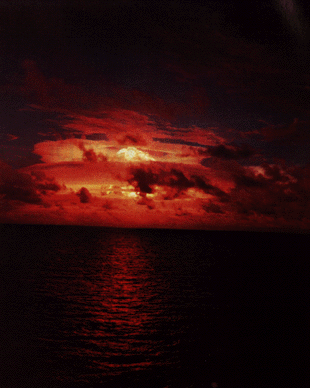Lommen Hall, the oldest building on the Minnesota State University, Moorhead (Moorhead State) campus, Moorhead, Minnesota, USA.
You are using an out of date browser. It may not display this or other websites correctly.
You should upgrade or use an alternative browser.
You should upgrade or use an alternative browser.
Republic of Spain WWF members on an expedition to the former regions of Andalusia and Castille-La Mancha.
Because of the nuclear blasts vast areas of the Iberian Peninsula have become largely empty of human life and have been recovered by the wilderness. In Spain much of this is along the Guadalquivir River in southwest Spain. The marshes now dominate the landscape there, and have been spreading into the La Mancha area again, were they have not been in a very long time. In general the temperature has risen a few degrees, increasing desertification in the south, and precipitation has become more erratic and violent. The forest has retreated, giving way to scrub. In terms of species, the conifers are replacing deciduous. WWF representatives have discovered that a few species have been severely hurt by the events of Doomsday, and yet others are recovering very nicely from damage caused to them by humans, such as the Iberian Lynx, which while still rare, is recovering far better than could be expected. Packs of feral dogs have also appeared in the region, and have caused representatives much grief in their travels.
:focal(1026x238:1027x239)/https://tf-cmsv2-smithsonianmag-media.s3.amazonaws.com/filer/da/eb/daeb8a53-3fd4-47f5-b72a-19b024ba03d0/3jgsdgzs-1494980157.jpg)
According to reports by LoN expedition members, a group of surviving animal species who escaped from zoos and subsequent hunting in the vast former United States and Canada showed a strange evolution of wildlife especially along the Mississippi and other rivers. One example is the giraffes that escaped from zoos, they began wandering around the forests followed by other animal species, safe from human hunting. Documented analysis revealed how much wildlife is rapidly recovering due to the effects of Doomsday in North America which then goes into an in-depth investigation about strange evolution during encounters, one report shows that there are feral dogs and cats wandering throughout the forests and abandoned areas that put investigators into a sense of grief and shock. (Source: Smithsonian)

The blast that took out New York City seen from a ship in the North Atlantic. This would soon be followed by two more dozen mushroom clouds.
The Red River winds between North dakota and Minnesota in early spring, as seen from Riverfront Park in Moorhead, Minnesota.
Celebrations for the 160th anniversary of the Unification of Italy, on a house in Palermo, Two Sicilies

A WCRB researcher testing for radiation levels in the southern United States during the 2009 expedition.

Brazilian frigate União underway to visit survivor states in the east of the former United States, c. 2020. The visit included stops to the Republic of Florida, the Republic of Virginia, Delmarva, and the Outer Lands.

Thanksgiving historical reenactment in the Republic of Virginia, November 26, 2021.

Suburbs of Aachen, during the war against the Army renegades in the Rheinland Confederation
Exterior of Šerefudin's White Mosque in Visoko, Bosnia. It was built on 1980
Last edited:
The largest airport that houses most of the government and military aircraft of Deseret is Provo Municipal Airport
Spanish Fork Pioneer Cabin, Deseret. Spanish Fork was the first Icelandic settlement in the United States and on current Deseret, their influence in Spanish Fork is still prevalent today. This is primarily visible in the Icelandic Monument found in Spanish Fork, as well as the festivals that have been held over the years to pay tribute to the Icelandic people who helped establish Spanish Fork.
(it could be an icelandic consulate too...or NU office for the south of the former USA)View attachment 699170
Spanish Fork Pioneer Cabin, Deseret. Spanish Fork was the first Icelandic settlement in the United States and on current Deseret, their influence in Spanish Fork is still prevalent today. This is primarily visible in the Icelandic Monument found in Spanish Fork, as well as the festivals that have been held over the years to pay tribute to the Icelandic people who helped establish Spanish Fork.
Matlock County Hall (County Offices, formerly Smedley’s Hydro) frontage. The pale building in the foreground is the Winter Gardens (once a ballroom). Is the First Representative (David Saxon) office and residence
Banco di Caribe, on the historic Area of Willemstad, Inner City and Harbour, Curaçao, Netherland Antilles
Share: